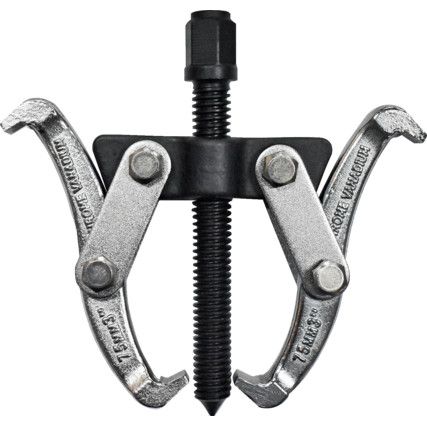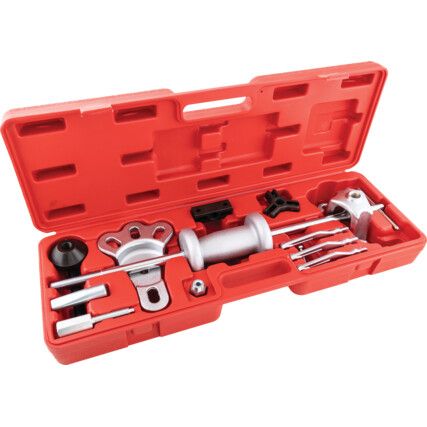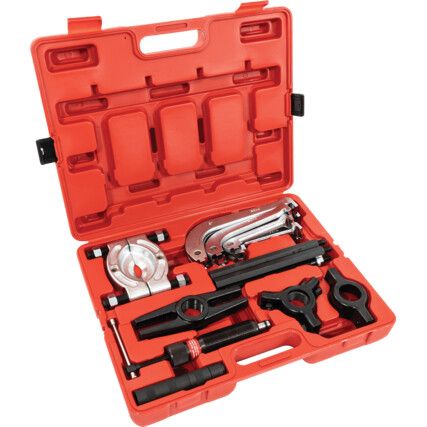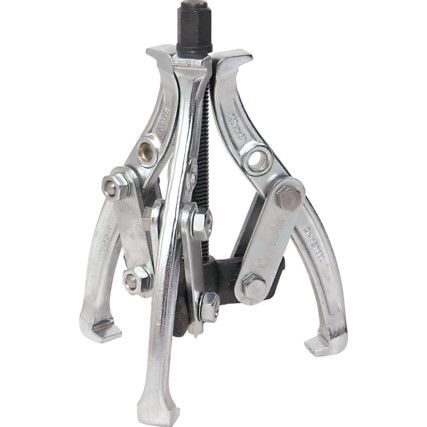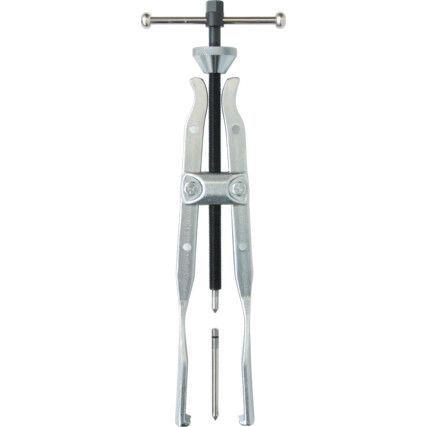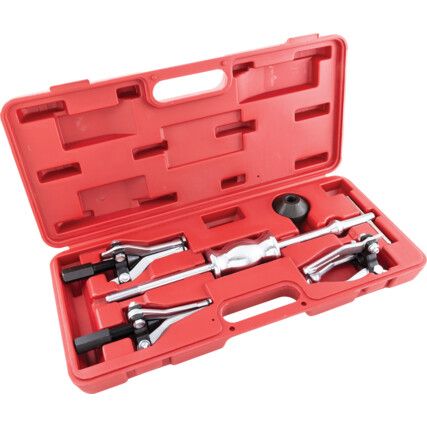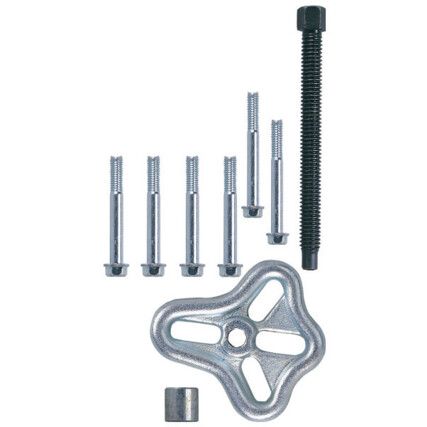Pullers
The puller (also known as a 'ram') is an invaluable piece of heavy-duty equipment, using a large amount of controlled force to give professionals the ability to separate parts with ease.
Cromwell stocks a range of quality pullers, designed to meet the needs of industry professionals, from leading brands Sykes-Pickavant, Kennedy® and Gedore.
What are pullers?
Pullers come in a variety of forms, and types but all perform a very similar task - removing shaft-fitted parts without damaging them.
Hydraulic pullers consist of a mechanical jaw that can grip objects with force, and a hydraulic jack that provides a large amount of pulling force.
Other types of pullers are available - such as mechanical pullers and jaw pullers. Yet hydraulic pullers are widely renowned for being the simplest, quickest, and safest way to dismount bearings, dismantle belt pulleys, and more.
Why a puller?
Pullers and rams effectively eliminate the risks associated with removing shaft bearings, couplings, or any other shaft-fitted attachment. In the past, users would have to heat, hammer, or pry parts away from the shaft - which was not only unsafe, but also very time consuming. There was a high risk that the parts (or the user) would be damaged in the process.
By using controlled hydraulic power, professionals are able to remove these parts quickly and without hassle. This not only saves them time, but money too.
When are pullers used?
Pullers and rams are used in any applications that involves shaft-fitted parts. This makes pullers especially vital in the automotive sector, the agricultural industry, and the shipbuilding industry to name a few. Specific jobs undertaken by pullers are pulling bearings apart, dismantling belt pulleys, pulling gears or round wheels or pulling any other type of tightened part that requires separation.
If you're looking for the ideal puller for your job but aren't sure about the best one for your needs, feel free to ask our experts for specialised advice.
Puller types
Whilst hydraulic pullers are generally considered to be the fastest and easiest type of puller, there are others that may be useful in certain applications.
• Internal pullers - These are used in instances where no spindle support is available when trying to remove shaft mounted parts. They boast a powerful shaft hammer which applies concetrated force.
• Mechnical pullers - These work by rotating a crossbar on the puller which in turn moves the centre bolt and effectively the pullung force screw towards the shaft, separating the necessary parts.
• Hydraulic pullers - Comprised of a hydraulic jack and jaws, hydraulic pullers use hydraulic force to quickly and easily pull components apart with minimal user exertion.
Considerations when choosing a puller
When it comes to buying the right puller, the main consideration to keep in mind is the size of the puller.
When it comes to size, there's a rule of thumb that should generally be adhered to which is that the centre bolt diameter must be over half the diameter of the shaft from which the object is being removed.
Pullers jargon buster
Here at Cromwell, we want to make it easy for you to understand our range of pullers, so we've outlined some key terminology to help you shop our range.
What does the reach of a puller refer to?
Simply put, the 'reach' of a puller is defined as the distance between the pulling surface of the jaw and the jaw's head. This will give you a better idea as to whether your chosen puller will be suited for your desired application.
FAQs
How does a hydraulic puller work?
Hydraulic pullers use a strong hydraulic pump that can build an enormous amount of pressure within the puller. This pressure moves the hydraulic cylinder, pushing the jaws of the puller. Once the jaws connect with the object that you're removing, the hydraulics provide enough torque to effortlessly remove the item.
